History Redcliffe has commissioned ten solid silver medallions to be released, one per annum, in the lead up to the 200th Anniversary of the first European settlement at Redcliffe in Moreton Bay; a small settlement that would eventually lead to the establishment of the State of Queensland.
The medallions are designed by local artist Shea Charlish and produced by the Royal Perth Mint. They are 99.9% pure silver, 32mm in diameter and come in an attractive presentation box.
These medallions will have a limited release of up to 250 and will each reflect the history of the Redcliffe Peninsula with an appropriate emblem. The individual medallions will not be numbered but each medallion will be issued with a numbered Certificate of Authenticity.
These commemorative medallions have been produced with the generous assistance of the Regional Arts Development Fund.
This is a great opportunity to collect a piece of Redcliffe’s significant historical memorabilia!
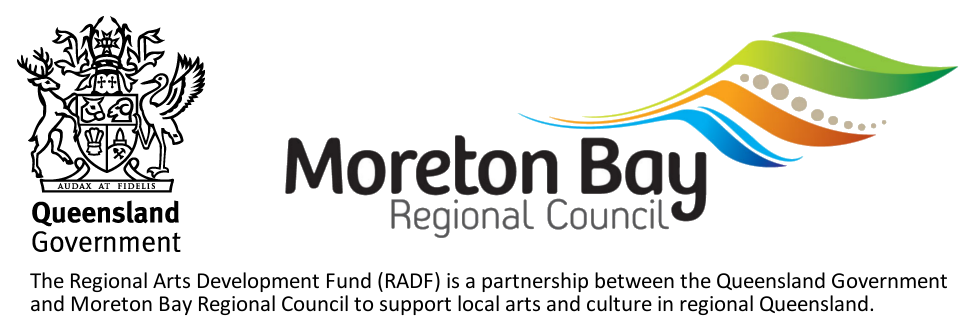
2024 – Medallion 10: Rail to Redcliffe 2016


Originally proposed in 1885, the Redcliffe railway line seemed to many Redcliffe residents to be a pipe dream. Early plans suggested that a line might come from Sandgate Station and span Hays Inlet with Redcliffe Station being located close to the Redcliffe CBD. However, over 130 years later, the new 12.6-kilometre line was extends from Petrie station and includes new rail stations at Kallangur, Murrumba Downs, Mango Hill, Mango Hill East, Rothwell, and terminates at Kippa-Ring.
The line was officially opened on 3rd October 2016 and began regular services the following day.
2023 – Medallion 9: Redcliffe Fire Station 1949


In 1948 plans were underway for the erection of an ‘official’ fire station at Redcliffe. Land was resumed on the corner of Mary Street and Oxley Avenue and tenders were called for its construction. The architect was Mr J. R. Hughes and Alex Smith was the builder. The building was completed and opened on 1 November 1949. The station was Heritage listed in 2005 and decommissioned in 2008. After undergoing full refurbishment in 2015 this building began a new life as an Art Precinct which is enjoyed by the residents and visitors.
2022 – Medallion 8: Sammy Bell Memorial 1913

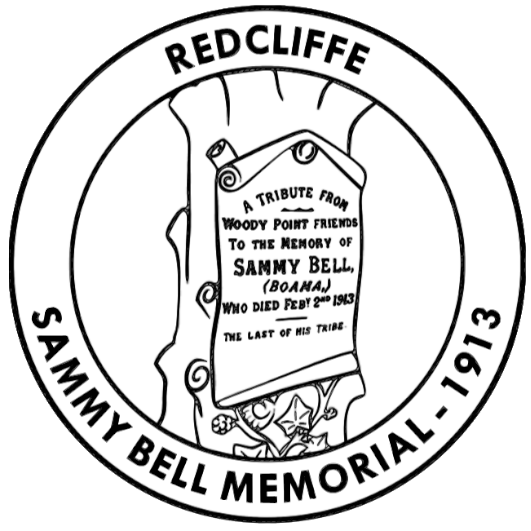
Boama, or Sammy Bell as he became known, was adored by locals and supported himself by getting oysters and crabs for residents and visitors and could be seen amusing visitors with well known songs and dances for pennies at Woody Point Jetty. His memorial stone was paid for by local residents. It is depicted on this 8th Medallion.
2021 – Medallion 7: Redcliffe Coat of Arms 1959-2008

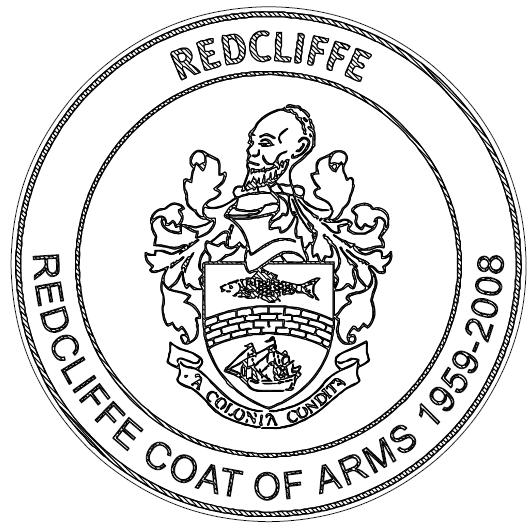
Originally, when it received city status in 1959, the City of Redcliffe obtained its coat of arms including motto and crest. It includes the motto, “A Colonia Condita” meaning “from the beginning of the colony”, marking Redcliffe’s status as the site of the first colonial settlement in Queensland. At the top of the coat of arms is a symbolic image of an Aboriginal law giver. This coat of arms is depicted on the 7th Medallion.
2020 – Medallion 6: Hornibrook Bridge Portal 1935
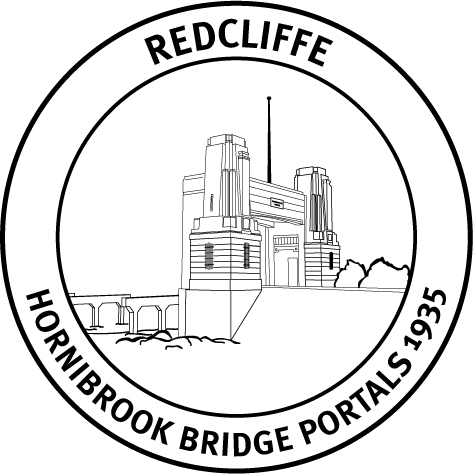

The Hornibrook Bridge was designed by Manuel Hornibrook and constructed by his firm from 1932-1935. It was a two-lane timber viaduct which spanned a record-breaking 2.684 km. The timber required for construction saw the employment of 250 timbergetters and the timber was transported by barge down the North Pine and Pine Rivers to the construction site. The bridge played a significant role in the development of Redcliffe City and was a great boon to the area. It opened to traffic on 4th October 1935 and closed in 1979 when the Houghton Highway opened. It was heritage listed in 1994.
The 6th Medallion features the northern portal of the Hornibrook Bridge.
2019 – Medallion 5: Anzac Memorial Avenue 1925
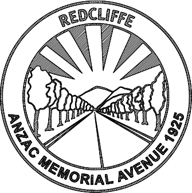

Anzac Memorial Avenue was proposed by Thomas James Rothwell as a memorial to the Anzacs of the First World War. Construction began in 1922 on the 17.8km road from Petrie to Redcliffe and was opened to traffic on 5th December 1925. It served to be a source of employment for many servicemen who returned from WWI as well as a memorial to their fallen comrades.
Over 2000 tree plantings lined Anzac Memorial Avenue by 1933 to commemorate the Anzacs. The 5th Medallion depicts this tree-lined memorial avenue.
2018 – Medallion 4: SS Koopa 1911

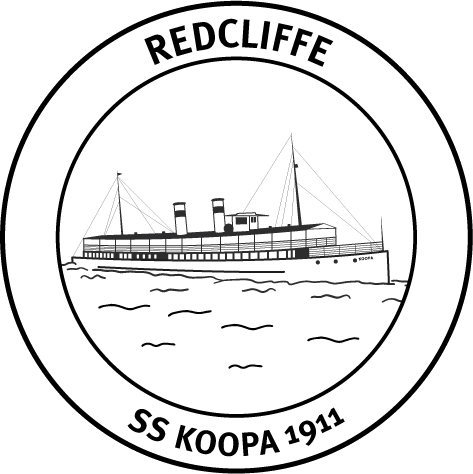
The SS Koopa brought many holiday-makers and day-trippers to Redcliffe. It was requisitioned for naval service during the Second World War before then returning to its regular duties as a pleasure cruiser.
The 4th Medallion features this popular steamship.
2017 – Medallion 3: Redcliffe Jetty 1922


The first Redcliffe Jetty was built in 1885 but by 1921 had become unsafe and was closed. The second jetty was built in 1922 and is fondly remembered by many, especially as it featured a halfway house and penny arcade. Ships such as Koopa, Doomba, Beaver and Marguerite all brought passengers from Brisbane to Redcliffe.
The 3rd Medallion features this second Jetty and the iconic halfway house.
2016 – Medallion 2: Red Cliffs


In 1799, explorer Matthew Flinders set off in the sloop Norfolk to explore the area north of Port Jackson. He arrived in Moreton Bay in mid-July of that year and noted the striking iron-rich cliffs of the peninsula and aptly named the Red Cliffs which give rise to the name Redcliffe as we know the area today.
The 2nd Medallion features these iconic cliffs as named by Matthew Flinders.
2015 – Medallion 1: Brig Amity

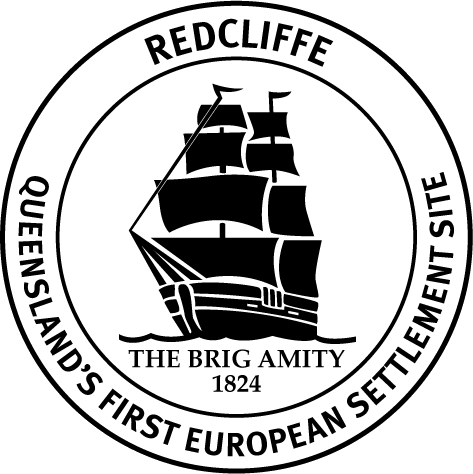
In mid-September 1824, Lieutenant Henry Miller landed the brig, Amity, on the shores of Redcliffe Peninsula. This was to be establish the first European settlement in Queensland – the Moreton Bay Penal Colony. The colony began with around 70 people including soldiers of the 40th Foot Regiment, 29 convicts, explorers and their families.
The 1st Medallion features the Brig Amity.

